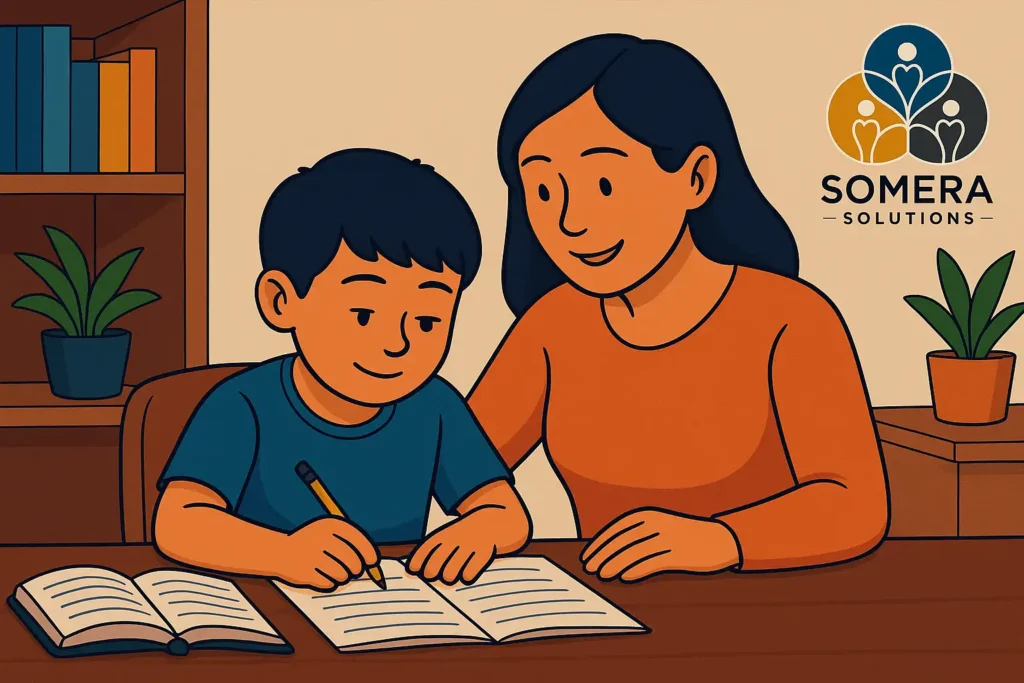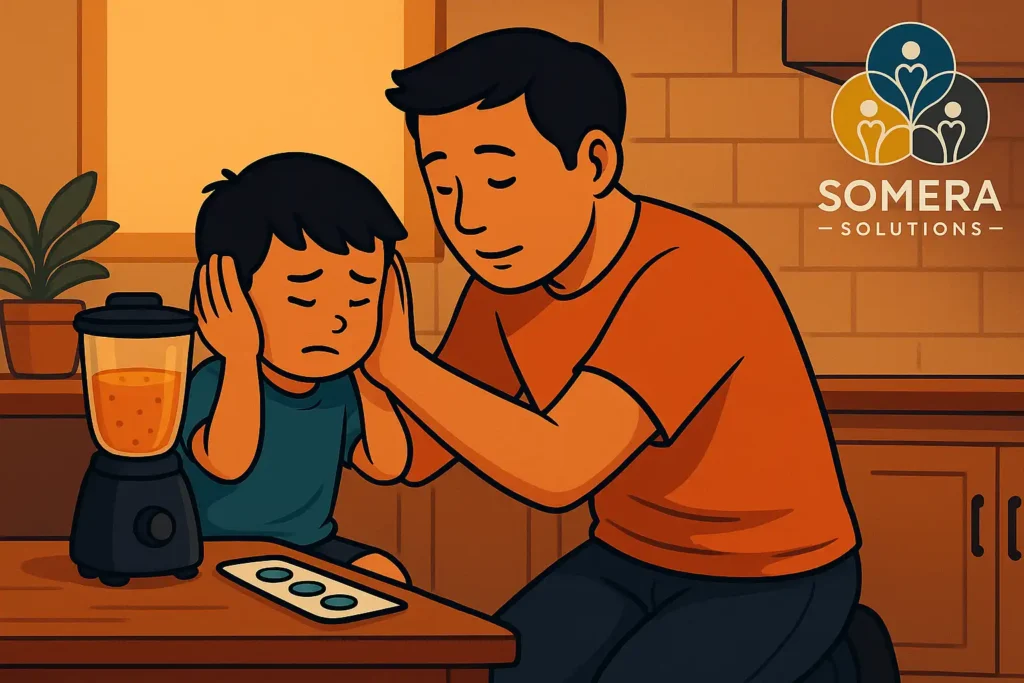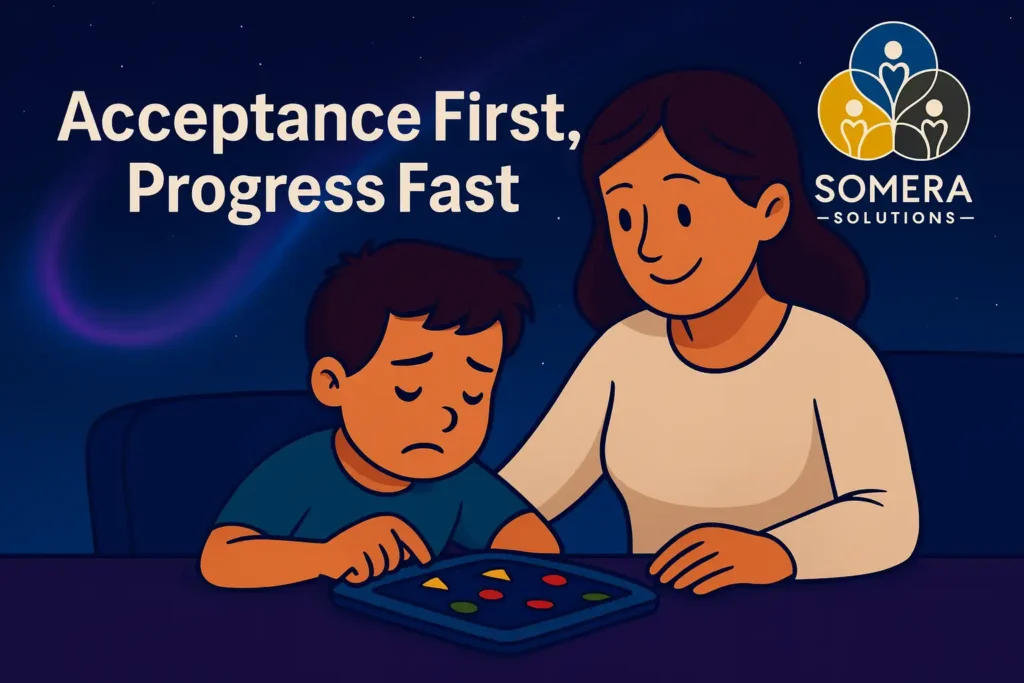Acceptance First, Progress Fast: A Family Blueprint Using ADHD Parenting Resources
We wanted faster progress, yet we skipped acceptance. That was the speed bump. ADHD parenting resources only work after your heart makes room for the truth.
A Glimpse of Our Story
For months, I told myself, “He’ll outgrow this.” I pointed to cousins and nephews who were “wild” at five and “fine” at 16. I laughed off the teacher’s notes. I bought more toys. I waited.
I also carried a quiet frustration. I thought all kids loved ice cream. My son cried at the first cold lick. I planned a perfect family day with homemade ice cream. He covered his ears because of the blender and cried all day. At birthdays, he hid under the table when the birthday song started. I kept saying, Maybe next time, and then I cried alone.
We signed up for more therapy hours, more programs, more tips—and still felt stuck. What was lacking? Applying acceptance to my son’s needs. Easy? Not at all. But that’s when change began.
The Problem We Faced as Parents
- Parent burnout and guilt
- Mixed expectations across caregivers“
- Try everything” overwhelms that dilutes every tool
- Hoping therapy/SPED alone will fix things—without first accepting daily strengths and limits
Without acceptance, even the best ADHD parenting resources slide off.
Feeling stuck and don’t know what to do while waiting for a developmental assessment?
Our Roadmap: Relationship, Routine, Resources
This is how to turn ADHD parenting resources into daily wins. Use all three pillars together. Keep it simple. Repeat what works.

Relationship — Lead With Connection
What it means: Warm tone, few words, predictable support.
How to use it today:
- Start hard moments with connection first (30–60 seconds cuddle/rock). The bonding rock works like magic.
- Use short cues: “First toothbrush, then Lego time.”
Praise fast and specific: “You finished toothbrush—well done!”
Routine — Make Steps Small And Finish Today
What it means: Short steps your child can finish now. Tiny wins, repeated.
How to use it today:
- Pick one routine (morning, homework, or bedtime).
- Make a 3–4 step picture strip.
Give a token now for each step. Trade five tokens for a tiny reward the same day. (Instead of smartphones, we introduced the old Super Mario game.)
Quick infomercial: My husband and I rebranded our small digital marketing agency and transformed it into an Autism, GDD and ADHD parenting resources hub. You can check our FREE resources here.
Resources — Only What Serves This Week
What it means: Use tools on purpose, not all at once. No scroll spirals.
How to use it today:
- Choose one or two tools from your adhd parenting resources list (e.g., First–Then cards + token board).
- Add one sensory support before a trigger (headphones before the blender; countdown before transitions).
Share a one-page plan with caregivers/teachers so everyone uses the same words. (For example, at school they use quiet hands, but at home we use safe hands. Ensure that you are using the same term to avoid confusion.)
Tip: Run this roadmap for one week. Keep what works. Drop one thing that didn’t. Add one upgrade next week.
A Week That Gently Changes The Story (Use Cases Included)
Tip: Run this roadmap for one week. Keep what works. Drop one thing that didn’t. Add one upgrade next week.
Day 1 — Morning Truth, Tiny Start
- Say out loud: “All is well, all the cells in our body are healthy and full of light.”
- Pick one routine to build this week (morning, homework, or bedtime).
- Use First–Then: “First pajamas, then story.” Give a small token now for each step.
Do a 60-second “move + calm” before hard tasks (we implement water bottle pushing).
Use Case: Breakfast refusal and blender panic.
- Offer a choice of two simple foods. Give the child authority and allow him to participate.
- Put on ear defenders (I put my hands on his ears and hug him before I blend.)
- Count down: “3–2–1—blend.”
- A token for staying with the plan, not for liking the smoothie.

Day 2 — Connection Before Correction
- Begin with a 30–60 second cuddle or gentle rock.
- Say one strength you saw yesterday.(“You were not scared of the blender, good job!”)
- Keep requests short: “Shoes on.” “Safe Hands.” “All done.”
Use Case: “Fun” ice-cream treat ends in tears.
- Accept the data: ice cream is not joy right now.
- Switch to a quiet bench, bring crackers or fruit, and celebrate the calm choice.
- This is acceptance in motion.
Note: I felt like I won the lottery when he ate the cone for the first time.
Day 3 — Visual Steps, Not Long Talks
- Make a 3–4 step picture strip for your chosen routine.
- Each step finished = token now; five tokens = small trade (song pick, extra playing time).
Use Case: Homework turns into tears.
- Set a 10-minute timer.
- First–Then: “First write your name, then Lego.”
- Praise effort: “You finished fast—token!”
Note: The token economy is very useful when doing homework.
Day 4 — Sensory Fit Beats Wishful Thinking
- List common triggers (blenders, crowds, tags, sudden music).
- Add one support before the trigger (ear defenders, tagless shirt, countdown, exit plan).
Use Case: Family party with loud singing.
- Preview: “When the song starts, we step outside.”
- Stand near the door, count down together, exit for 60 seconds, then return.
Token for using the plan—not for staying the whole time.
Day 5 — Share The One-Page Plan
- Give teachers and caregivers a simple card:
- Your four family cues (First–Then, Soft blow, Safe Hands, All Done)
- The picture steps for this week’s routine
- Tiny rewards that work
- Your four family cues (First–Then, Soft blow, Safe Hands, All Done)
This is practical ADHD parenting support. Consistency beats perfect technique.
Use Case: Family party with loud singing.
- Preview: “When the song starts, we step outside.”
- Stand near the door, count down together, exit for 60 seconds, then return.
Token for using the plan—not for staying the whole time.
Day 6 — Caregiver Alignment And Self-Compassion
- Ask one trusted adult to mirror your four cues for a week.
- Schedule a 10-minute nightly reset for you (water, breathe, one line of gratitude).
Write one sentence: “Today I chose small steps over worry.”
Use Case: You feel judged or alone. Join one small circle—local or online ADHD parenting support groups—for scripts, wins, and encouragement that keep you steady.
Day 7 — Review, Not Regret
- Circle what worked, cross out what didn’t, and change one piece for next week.
- Say the line: “We go tiny, and we finish.”
Disclaimer: I’m not an expert. I’m just a mother who wants my son to get better using available ADHD parenting resources online. These methods, and the ones I will share in the future, are based on my experiences, research, webinars, and consultations with our pediatrician, developmental pediatrician, and therapists. For health development assessment and therapy planning, please consult a licensed practitioner.
The Self-Assessment (When Your Heart Is Ready)
Score each 0–2 (0 = not yet, 2 = yes):
- I can name three strengths my child showed this week.
- Our goals match what my child can do today.
- All caregivers use the same short cues.
- We give instant, specific praise for small steps.
- We are building one routine this week.
8–10: Protect what works. 5–7: Tweak one area. 0–4: Restart with one routine and four cues.
Turning ADHD Parenting Resources Into Results (Without The Scroll Spiral)
Use only what serves your week:
- Visuals: First–Then cards, picture schedules.
- Motivation: Token boards with immediate trades.
- Sensory: Supports before the trigger (ear defenders, countdowns, choice).
- Community: A small adhd parenting support circle for scripts and courage.
- Kids’ Tools: Simple ADHD resources for kids—picture books, skills games, calm-down cards—so practice feels like play.
Looking for quality? Choose the best ADHD parenting resources that teach short, repeatable steps and fast praise—not long lectures or once-a-week heroics.
Boundaries That Keep You Steady
- One routine at a time.
- Two adults, same words.
- Three steps max per strip (add a fourth when it’s easy).
- Four-minute breaks after hard work.
Five tokens a day traded for small joys.
When To Ask For Extra Help
Call your pediatrician or a specialist when any of these symptoms last for two weeks:
- School calls often; work stays unfinished.
- Safety risks (running off, climbing high places, hurting self or others).
- Social pain (constant conflicts or no invites).
Outside help + acceptance + your plan = faster, steadier progress.
What Acceptance Gave Our Family
- We stopped chasing a “typical” day and started building a doable day.
- We praised effort now, not perfect results later.
We used the same short words across home and school—real ADHD and autism resources for families in action.
We let go of the ice-cream fantasy and chose our child’s real joys—movement, music, short jobs, quick wins. (We also have to include spaghetti.)
FAQ
Do a 2-minute reset: drink water, breathe in 4/out 6 (×3), say, “We go tiny and we finish.” Use short cues (“First pajamas, then story”) and give instant praise for each small step. One win beats a long lecture.
Build one routine at a time. Use First–Then cards, a token chart (reward now), and a 10-minute move + calm before hard tasks. Keep steps small and repeat daily. Simple ADHD parenting resources like visual schedules and calm scripts help a lot.
Ask for simple supports: a front-row seat, clear First–Then directions, short tasks with breaks, and extra time. Use a token or points system for effort, not just perfect work. Send a one-page routine card from home (same cues, same steps) so school and home match. Regular check-ins with the teacher keep the plan on track.
14-Day Tuned-In Parenting Toolkit (Free)
One of our discoveries is to learn what type of parenting role it is. At first, we thought we were being parents and that’s it. Later, we discovered that I am more of a “Helper” parent and my husband is more like a “Director.”
The goal is to become a tuned-in parent. So, we created an ebook called: 14-Day Path to Tuned-In Parenting (Free). In this ebook, you can identify your parenting style and match it with your child’s communication phase.
Need a trusted developmental pediatrician?
Use the official PSDBP directory to search by name or region.
Note: If your doctor isn’t listed, they may still be a developmental pediatrician but not a member of the organization. Please verify independently.
Get tips, stories, and tools for raising neurodivergent kids.
Join our growing community of parents building hope with AI-powered support.
By submitting your email, you agree to receive updates, resources, and offers from Somera Solutions. You can unsubscribe at any time.
Iryne is a tech-savvy mama and the creative force behind Somera Solutions. With a background in engineering and technical writing, she blends her passion for AI, parenting, and early intervention to help families navigate autism, ADHD, and developmental delays, one tool at a time.


